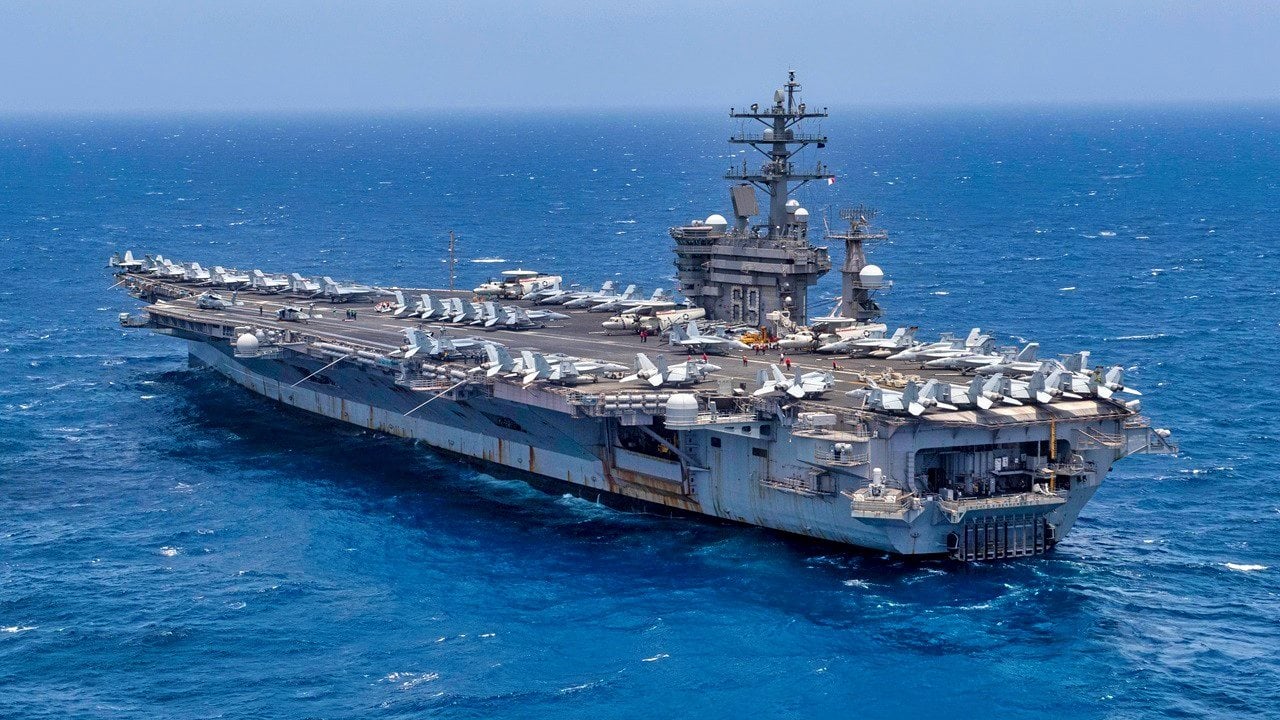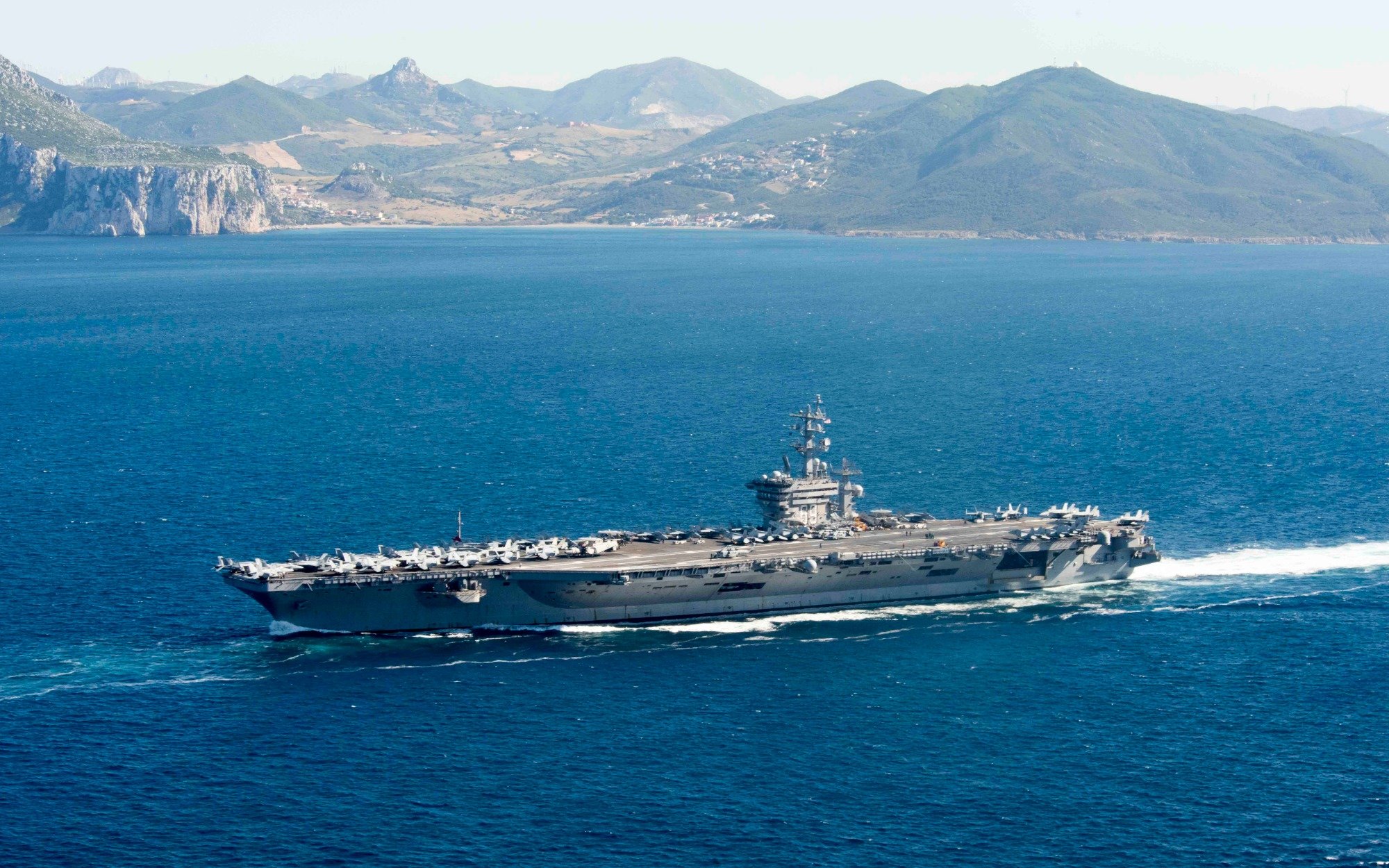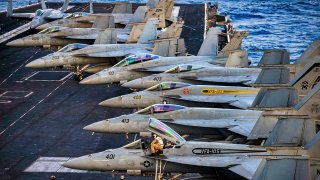The U.S. Navy's 'Ike' Aircraft Carrier Is Back in the Red Sea
After more than four decades of operations, the USS Dwight D. Eisenhower is the second-oldest nuclear-powered aircraft carrier in the world that is still in service.
It may have looked like the U.S. Navy was calling it quits in the Red Sea just weeks ago. Houthi rebels in Yemen might have thought they drove off the Nimitz-class nuclear-powered aircraft carrier USS Dwight D. Eisenhower (CVN-69) when it transited the Suez Canal into the Mediterranean Sea.

However, after being rearmed and resupplied, the supercarrier is back in the Red Sea, joined by the Arleigh Burke-class guided-missile destroyer USS Gravely (DDG-107). The vessels will take part in a maritime security mission that is expected to last for a while. Crews were able to get some downtime and take in the sights during a brief port visit to Crete.
The Long Haul for the Ike
The Ike left its homeport of Norfolk, Virginia, on Oct. 14 and has now been deployed for nearly seven months. The warship and its escorts operated in the Red Sea starting last fall, protecting shipping lanes in the Red Sea and the Gulf of Aden from Houthi forces that began attacking commercial shipping in response to the Israel-Hamas War. The carrier’s air wing and the vessels of its Carrier Strike Group have been shooting down drones and missiles launched from Yemen, as well as conducting strikes on storage facilities in that country.
The Navy has reportedly expended nearly $1 billion in missiles to counter the Houthi threat, some of them in strikes against Iran-backed rebels in Yemen.
This is not the first time CVN-69 has seen a lengthy deployment to the Red Sea. In response to Iraq’s invasion of Kuwait in 1990, the Dwight D. Eisenhower became the first Navy flattop to conduct sustained operations in the waters of the Red Sea. It was the second nuclear-powered carrier to transit the Suez Canal.
Deployment to Continue
How long the deployment will last is unclear, but as USNI News reported, the three carriers deployed from the East Coast since December 2021 have averaged 267 days at sea. That included the Nimitz-class carriers USS Harry S. Truman (CVN-75) and USS George H.W. Bush (CVN-77), which were deployed for 285 days and 257 days respectively. The USS Gerald R. Ford (CVN-78), the lead vessel of the Navy’s newest class of supercarriers, returned home in January from a 260-day maiden deployment that kept the ship mostly in the Mediterranean Sea.

After more than four decades of operations, the USS Dwight D. Eisenhower is the second-oldest nuclear-powered aircraft carrier in the world that is still in service. She is currently scheduled to be replaced around 2029, when the new Ford-class supercarrier USS Enterprise (CVN-80) enters service.
Author Experience and Expertise: Peter Suciu
Peter Suciu is a Michigan-based writer. He has contributed to more than four dozen magazines, newspapers, and websites with over 3,200 published pieces over a twenty-year career in journalism. He regularly writes about military hardware, firearms history, cybersecurity, politics, and international affairs. Peter is also a Contributing Writer for Forbes and Clearance Jobs. You can follow him on Twitter: @PeterSuciu. You can email the author: [email protected].


